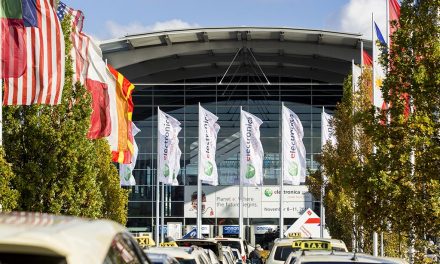Business change for climate change: capitalising on the conscious consumer
By Antony Bourne, President – Industries, IFS

We’re arguably now far more environmentally aware than previous generations and, with the timeline for preventing irreversible damage worryingly short, this is a very good thing too. This shift in consumer attitudes has shaped our relationship with those producing the things we consume. According to a recent study, almost 90% of consumers now want brands to help them be more environmentally friendly and ethical in their daily lives. Awareness hasn’t only driven demand for change, it’s also influencing behavioural change. Nielsen’s 2018 report, for example, found that almost three-quarters would change their consumption habits to reduce their impact on the environment, and 46% would choose products based on environmental creds over brand name.
Sustainability is business-critical
The past three decades have seen the growth of a fervent consumerism in society; from which manufacturers, logistics firms, and companies the world over have profited. So, while it’s fantastic to see the recent planet-saving U-turn from consumers, it’s understandably also sparked concern from many businesses. Conscious consumers may in the past have ‘gone green’ by recycling newspapers, and using energy-saving lightbulbs – with limited impact on manufacturers and suppliers. Now, however, with consumers more aware of the cost of fast fashion, the pollution caused by gas-guzzling vehicles, and the deforestation needed to sate carnivorous appetites, sustainability is business-critical.
Adopting sustainable business practices, minimising environmental impact, sourcing materials/components/assets responsibly and achieving transparency throughout supply chains, should no longer be regarded as merely CSR aims. They should form the basis of a manufacturer’s business strategy. How? By gaining accurate insight into every element of and asset within your business, and using technology, connectivity and data to address challenges and drive change.
Will it be a challenge? Perhaps. Will it be worth it? Definitely. In addition to attracting the growing ‘conscious consumer’ market, gaining tactical and operational insight into every facet of an organisation will help reduce material use and waste, and grow profits in the long-run. According to one estimate, meeting the UN’s Sustainable Development Goals could generate an estimated $12 trillion in business savings and revenue, and create 380 million jobs by 2030.
We should look to Sri Lanka for one example of this approach already in action. Monofilament manufacturer Eco Spindles is working with the Navy to gather plastic bottles from the island’s coastline, and recycle these into yarn which can then be used to make clothing. The company has complete visibility of its supply chain, meaning its customers can trace with pinpoint accuracy, the origin of materials used. In fact, some are now requesting yarn sourced from bottles gathered from specific beaches – providing a value-add and competitive differentiator for their end-customers.
This is a great example of what can be achieved by a shift in attitudes (from both business and consumer), and the UN’s goal is a promising forecast for the next decade. But first: those challenges.
Traceability and transparency
Gaining a holistic insight of business operations means gathering data, and lots of it. This data (covering everything from where and how raw materials are sourced to the production and disposal of waste materials) can then be used to model the effects of changes implemented and plan accordingly. A manufacturer might sign up to an ethical scheme which requires changing suppliers to meet the scheme’s requirements, for example. Harnessing AI and predictive analytics means the manufacturer is able to model the knock-on effects this will have, and put plans in place to reduce risk and mitigate problems further down the line.
It’s easy when you have the data, but it’s here that many businesses have historically struggled. Spreadsheets, filing cabinets of paper, and manual data input unfortunately remain a component of resource and asset management within many organisations. This information exists in siloes, is quickly outdated, difficult to access and (due to human error), not always entirely accurate. Suddenly, tracing your suppliers and checking whether they adhere to sustainability requirements becomes a very tricky task. The same goes for aligning production with demand. If you’re not able to access timely information on end-user demand for your products (nor respond to fluctuations quickly), over-production or under-production remains an issue – impacting sustainability goals and revenue streams.
Enabling transformation
The potential to move to a more sustainable model exists for many manufacturing companies, thanks to the introduction of greater connectivity and new technologies. What’s needed to take these businesses to the next level is a solution that maximises the value of connectivity and emerging technologies. Data must be collated from across a business, updated in real time, and accessible by all relevant parties via a single platform. Historically, implementing new processes or integrating emerging tech without such a platform would have involved a very laborious and rather risky trial-and-error approach. With a single resource planning solution, on the other hand, capabilities like AI and technologies like blockchain can be introduced smoothly, opening up new opportunities.
Introducing blockchain into supply chains, for instance, provides much more accurate information that cannot be tampered with, and allows companies to access different blockchains to see and compare different suppliers and products. This will result in greater transparency to the consumer, and strengthen trust in the supply chain.
Accurate data and forecasting will also allow companies to adapt with speed and agility, as well as providing the foundation for sustainability. This deep insight can help drive efficiencies across an organisation. An efficient supply chain eliminates waste, and capital coupled with sales effectiveness allows for goods to be manufactured and transported to the end-customer only according to actual demand. Eliminating excess stock returns adds to a level of sustainability that is difficult to achieve by other measures.
Time for change
Change is needed by all in the manufacturing industry, and evolving consumer tastes and tighter regulation by governments shouldn’t be the only factors driving this change. Transformation should be proactive rather than reactive, and should involve the adoption of new technology and the introduction of effective management processes. Throwing a load of money at a load of high-spec tech isn’t enough – businesses need buy-in from employees and C-suite, and a team which feels confident using asset and resource management tools.
Sustainability and the conscious consumer shouldn’t be seen as risks to the manufacturing sector, but opportunities – to instigate change, challenge outdated business models and evolve and innovate across your entire organisation.













